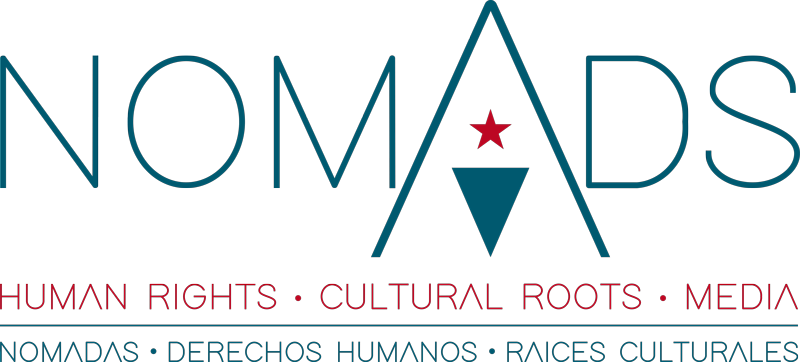THE REFUGEE CAMPS
“To those who endure the wait, the shade will come” Sahrawi proverb.
Refugees from Western Sahara often refer to their lives as “Gurba” – a collective sentence imposed on their people forcing them to live in endless banishment, permanently homesick for a homeland they cannot reach and far from loved ones they cannot embrace. The Hassanyia language defines “Gurba” as a collective condemnation against Sahrawis in exile who are on an endless search for their promised land, meanwhile living on borrowed land.
Decades after their exodus to Algeria, Sahrawi refugees still await a diplomatic solution to the Western Sahara conflict that will allow them to return home. Most are so young that they have never been to their land.
The Sahrawi refugee camps are in Northwestern Algeria near the town of Tindouf, in an area of the Sahara Desert commonly known as the Hammada or “Desert of deserts” because of its unforgiving climate. Sahrawis have lived there since they were forced to flee their homes in the Western Sahara in 1976, after Morocco and Mauritania invaded. (Read more about the conflict)
While most men went to fight in a war against Morocco and Mauritania, Sahrawi women built basic structures to house schools, clinics and community centres and ran the camps themselves. Women continue to have a central role in Sahrawi society and politics.
Separated for decades from family members who have remained in their occupied homeland, Sahrawi refugees have created a parallel society and government-in-exile known as the Sahrawi Arab Democratic Republic (SADR). Although in Algerian territory, the Sahrawi exiles established a system of self-rule, with a constitution and an independent government administration that includes a president, a prime minister and ministries handling areas such as education, health, transportation, culture and security. The SADR government is a founding member of the African Union and is recognised by dozens of countries around the world.
The main refugee camps, known as wilayas, are named after the main occupied cities in the Western Sahara: Dajla, El Aaiún, Ausserd, Smara and Bojador. Rabuni, the administrative center, is home to the SADR government and international NGO’s working in the camps. The camps are subdivided into dairas (towns with mayors) and each has several neighbourhoods mostly run by women. There are also numerous community organisations and cooperatives that work on youth, women, culture and other areas.
The refugees depend on dwindling international humanitarian aid for food, medicine and other goods and services. These resources are administered through the Sahrawi Red Crescent and the Cooperation Ministry. Women community leaders are charged with distributing the aid to families.

The camps suffer from a scarcity of drinking water, sanitation, food and electricity. Medical centres and hospitals are barebones, although the Sahrawi and Cuban medical professionals staffing them are well trained. The extreme climate and lack of basic services are especially hard on the children, who suffer from parasitic, respiratory and skin ailments and many of whom are malnourished. Among the adult population there are high levels of diabetes, asthma and other chronic illnesses, and many pregnant women suffer from anemia. Over half of the refugee population is under the age of 18 and there is chronic unemployment.
The government-in-exile has prioritized education and culture as survival tools to endure the years of waiting and with the hope that these skills will prepare the refugees for an eventual return to their homeland. All the camps have pre-schools and primary schools, and there are several secondary schools. The camps also have post-secondary education and technical programs for various trades. Primary school children spend summers with families in Spain and become fluent Spanish speakers through a program called “Holidays in Peace”.
There is practically a 100% literacy rate in the camps — a monumental feat for a population that was 95% illiterate when the camps were first built. Many youth study abroad through secondary and university levels, primarily in Algeria and Cuba. Cuba-educated Sahrawis are bilingual and are known as “Cubarawis”; many are doctors and schoolteachers but some graduate in careers such as engineering. A significant amount of Sahrawis also study in Spain.
In addition to international country donors, large NGO’s and the UN, support for the refugees comes from the vast solidarity movement in Spain and other countries. Hundreds of solidarity associations send humanitarian aid, and volunteers are constantly traveling to the camps to conduct trainings and support projects. Most of these organisations are based in Spain but there is a large network of support groups from many other parts of the world.
There are several schools in the camps specialising in culture and the arts that operate within the realm of the Sahrawi Ministry of Culture: The Abidin Kaid Saleh Audiovisual School, often referred to as the Sahrawi film school, trains the very first generation of Sahrawi filmmakers, while students at the Sahrawi Arts School are trained in visual arts such as painting and sculpture and the Sahrawi Music School trains young musicians.
Scores of international events take place annually in the camps, including FiSahara, ARTifariti, the Sahara Marathon and the International Theatre and Circus Festival.
The refugee camps have community radios and a TV station known as RASD-TV. Both center on educational and community programming.
